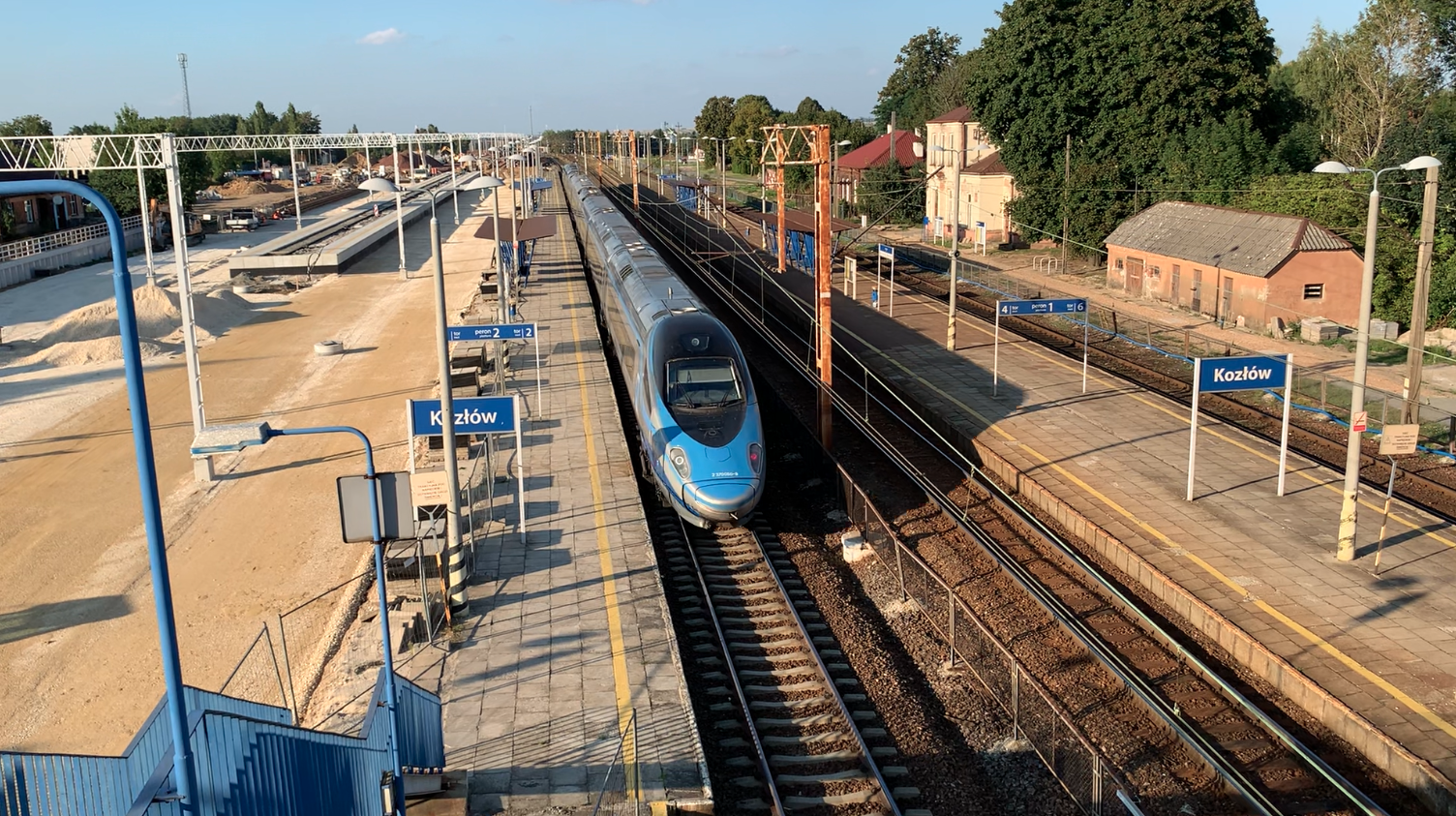Kozłów 2025-09-30
PKP Kozłów.
Geographic coordinates: 50.474 N, 20.012 E. Elevation: 305 m. Address: KOZŁÓW 241 32-241 KOZŁÓW.
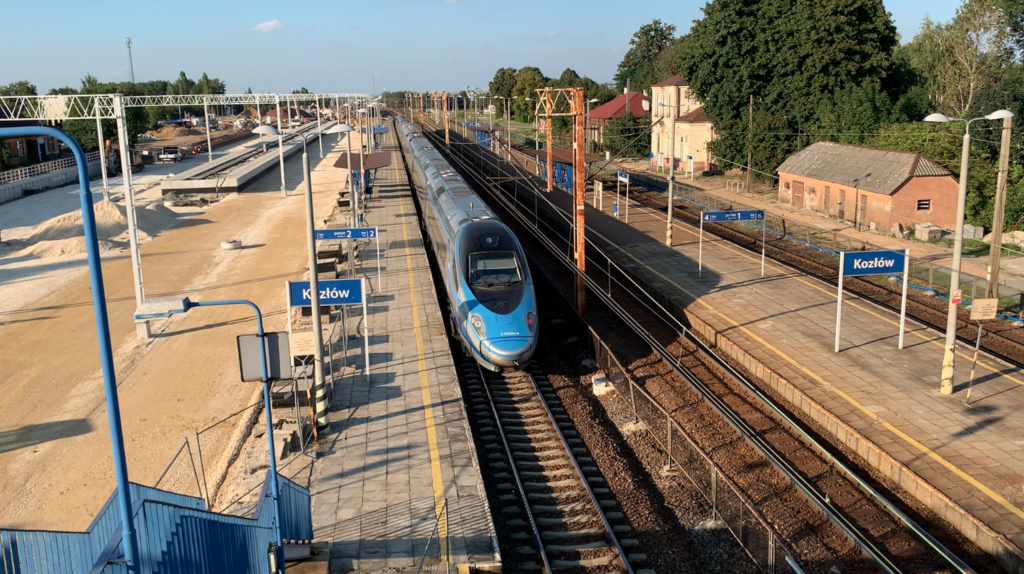
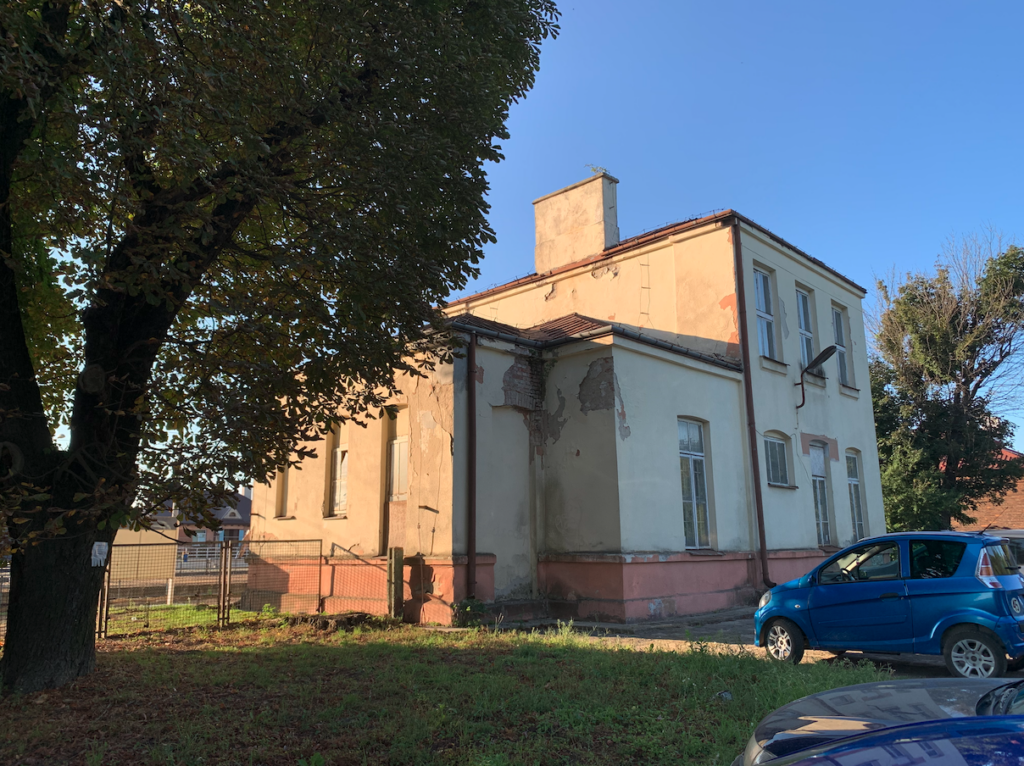
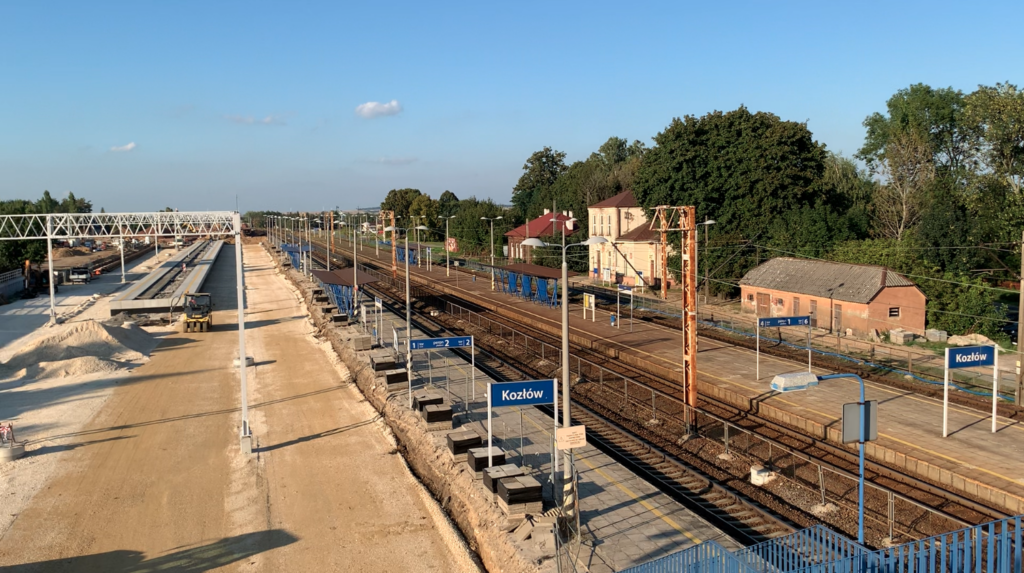
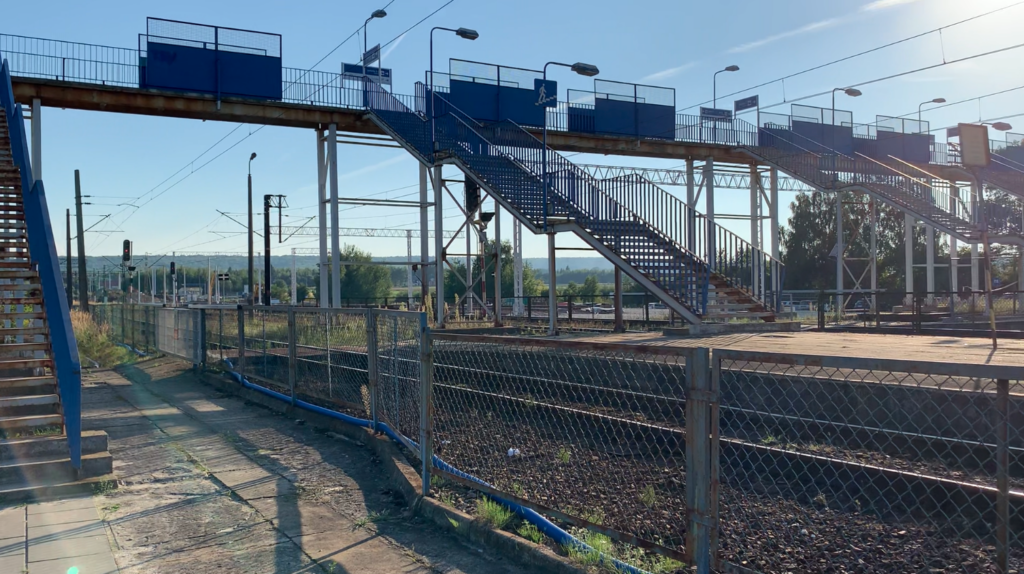
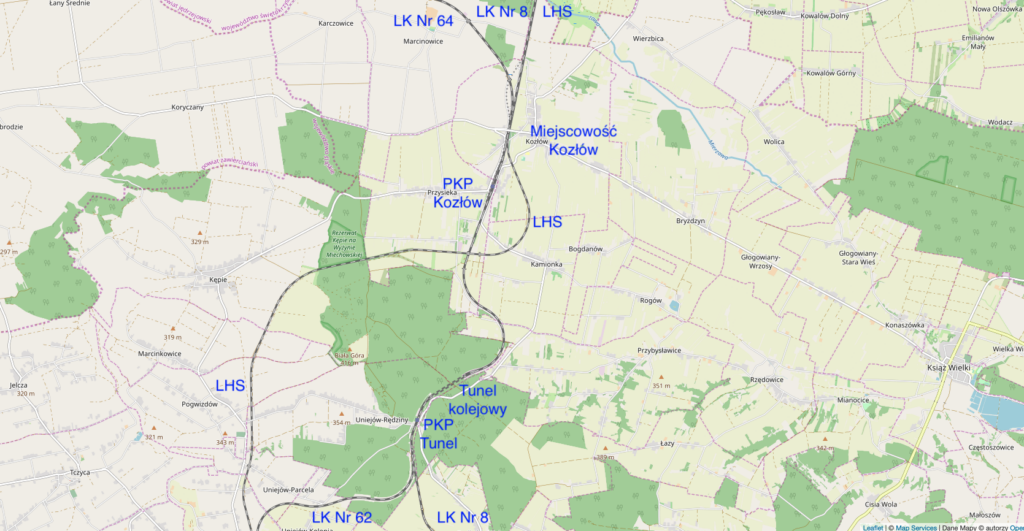
The station is located in the Lesser Poland Voivodeship, in the Kozłów commune, in Miechów County. The station is located on Railway Line No. 8 Warszawa Zachodnia – Kraków Główny and is the starting point of Railway Line No. 64 Kozłów – Koniecpol. The station is located at km 262.098 of Line 8. The station opened in 1892. During the period 1892-1915, the station was called Пржисѣека, or Przysieka written in Cyrillic (the letters used before the spelling reform of 1917). Przysieka is a small settlement to the west of the station. By 1915, during the Great War, the name was already written in Polish. In 1924, the name was changed to Kozłów, which remains the same to this day.
Kozłów is a small village located northeast of the station, approximately 1,500 meters away. The village lies approximately 17 km north of Miechów and approximately 55 km north of Kraków. The village has a population of approximately 1,200 (2021). The entire Kozłów commune has a population of approximately 5,000. The village of Kozłów is typically agricultural, with single-family homes. Kozłów is home to the commune office, the Parish of the Exaltation of the Holy Cross, a primary school, a kindergarten, a health center, and cultural institutions. The village was founded in the 14th century. For a long time, it was owned by the nobility.
In 1885, the railway reached Kozłów, or rather the settlement of Przysieka. The station was used for the construction of railway tunnels under Biała Góra. The tunnels were a Tsarist requirement, with military purposes. A large railway junction was established in the Kozłów area, which was expanded and transformed over time.
The section between Tunel and Radom stations was part of the Ivangorod-Dąbrowa Railway. The Ivangorod-Dąbrowa Railway (Russian: Ивангородо-Домбровская железная дорога, Ivangorod-Dombrovskaya železnaya doroga), also known as the Ivangorod-Dąbrowa Iron Road, currently the Dęblin and Dąbrowa Górnicza stations. The line was built between 1883 and 1885 and was 462 km long. It was built as a broad-gauge line. However, it should be remembered that the Muscovites deliberately did not develop railway routes in the Kingdom of Poland to hinder potential enemy military operations. But as a result, economic backwardness arose. A minor breakthrough in the efforts to launch a railway came in April 1875, when St. Petersburg issued a permit for the construction of a route from Ivangorod (Dęblin) to Dąbrowa (Dąbrowa Górnicza). The Ivangorod-Dąbrowa Railway Company, which managed the railway, was nationalized in July 1897 and operated under the name Nadwiślańskie Skarbowe Drogi Żelazne (Vistula Treasury Railways) until the outbreak of World War II.
Tunnel under Biała Góra.
A railway tunnel under Biała Góra Hill (416 m above sea level) lies 10 km from Miechów station towards Warsaw. The tunnel is part of the infrastructure of Route No. 8, Warsaw-Kraków. The tunnel was built solely for Moscow’s military purposes. Biała Góra Hill is relatively small, and bypassing it would not have been a problem, as evidenced by the construction of the broad-gauge LHS line in the 1970s, which runs partially parallel to Route No. 8. The tunnel was part of the aforementioned Iwangorod-Dąbrowska line. The railway tunnel was intended by its designers as a feature that could be blown up in the event of a war with Prussia or Austria-Hungary, thus hindering enemy attacks.
In 1882, construction began on the first of two tunnels. A brickyard was commissioned for construction purposes, as the tunnel’s interior was lined with brick. On July 27, 1883, the teams working on the tunnel from both sides met. The tunnel opened for operation on January 25, 1885. The tunnel is 764 meters long. Wide tracks were laid in the tunnel. Small chambers (niches) were built every 80 meters to provide shelter for railway workers from approaching trains. There are also two T-shaped chambers for strategic and storage purposes. The tunnel slopes significantly northward, measuring 8 per mille. The tunnel runs almost in a straight line. The tunnel entrances were bricked and marked with the dates 1882–1884, marking the beginning and end of the first tunnel’s construction. The farms on the hill were liquidated, the population was evicted, and the fields were reforested. This was the first railway tunnel in the Kingdom of Poland. Currently, the border between the Kozłów and Charsznica communes runs through the hill. Construction of the tunnel was very expensive, so parallel excavation of the second tunnel began only in 1910, and it was opened in 1912. The second tunnel is 40 meters from the first. Its length is the same as the first tunnel, 764 meters. Other estimates indicate a length of 768 meters. The nearby Tunel railway station owes its name to this structure.
In 1914, the tunnels were blown up as planned. They were rebuilt in independent Poland in 1920. In 1934, a line was built from the Tunel station (Uniejów Rędziny) through Miechów and Słomniki to Kraków. This development increased the importance of the route from Radom and Kielce. Currently, the route between Tunel and Sosnowiec Główny is designated Line No. 62. The tunnel was not destroyed during the 1939 Defensive War. However, it was blown up in 1945 by retreating German troops. The tunnels were rebuilt in 1945.
In 2005, the tunnels were renamed “August,” the western tunnel (formerly “Ferdynand”), and “Włodzimierz,” the eastern tunnel (formerly “Jan”). A twin tunnel was planned to be built near Suchedniów. Its construction was never completed due to the outbreak of World War II.
Kozłów Station
In the 1930s, 10-11 railwaymen worked at the station. There were two train dispatchers, one telegraph operator, four station attendants (a switchman and a semaphore operator), a ticket and baggage claim cashier, and an office worker. Trainees from Kielce and Skarżysko Kamienna often worked at the station. The station had no restaurant or shop. Of the existing station buildings, the station building, the stationmaster’s residence, and probably a warehouse remain. Kozłów station was expanded to a large size, eventually becoming inadequate for the number of train connections served.
In the 1960s, Kozłów station received three island platforms, each with two platform edges. Each platform was 300 m long. The platforms were 0.30 m high. Their surface was made of typical pavement tiles, measuring 0.5 x 0.5 m. Warning lines were painted. Two metal bus shelters were placed on each platform, each 20 m long. Platform 1 was located between track 6 and track 4. Platform 2 lies between track 2 and track 1. Platform 3 lies between track 3 and track 5. A pedestrian bridge was built on the southern part of the platforms, connecting the platforms and both sides of the station: the eastern and western. Years later, it turned out that the station was not accessible to passengers in wheelchairs. Although there was a passage for luggage carts near the bridge, subsequent renovations led to the crossing being withdrawn from service. Passengers with large hand luggage, as well as residents, carved a path across the tracks from the north side of the platforms. It’s important to remember that residents built their homes on plots on both sides of the station. The platforms were equipped with benches, trash cans, lighting, railway information displays, and an audio system. In 2013, the footbridge underwent its final renovation, during which time lighting was installed. It’s worth noting that the Kozłów commune planned to use its own funds to build a tunnel under the tracks in the northern part of the station. The work was scheduled for completion in 2021. Additionally, metal fences were erected on the station level to prevent irresponsible individuals from accessing the tracks. This solution was used in Poland between 1960 and 1990.
On September 8, 1966, the Sędziszów – Tunel section, which was part of Line No. 8, was electrified. At the same time, Kozłów railway station was electrified. Shape signals were also replaced with light signals at the same time.
On the western side of the station, there was a siding to the State Grain Works PZZ Kozłów. The siding initially ran southward, but then turned westward near the station (before the platforms). The siding was approximately 500 meters long. The plant was built in 1955, closed in 2000, and the tracks were also dismantled.
Kozłów station is home to the following railway lines: Line No. 8 Warszawa Zachodnia – Kraków Główny and Line No. 64 Kozłów – Koniecpol. This line also connects to the Central Main Line. Thanks to this, Kozłów boasts ED250 Pendolino trains to and from Kraków. And that’s not all. Behind Biała Góra, at the Tunel station, is LK No. 62 Tunel – Sosnowiec Główny. The LHS (Lienia Hutnicza Broad Gauge) railway line, built in the 1970s, also runs through the Kozłów area.
The station was built on the eastern side of the tracks. The building is not large and is constructed of brick in a modernist style with a nearly flat roof. The building is a multi-story, two-story structure with tall rectangular windows. Clocks, which no longer exist, once graced both facades. The building lacked many architectural features. The main entrance faces the tracks and has a decorative portal. The building housed a ticket office, a waiting room, service offices, and likely an apartment on the first floor. Restrooms were located in a separate building. In the 1990s, the ticket office and waiting room were closed. During renovations, the building received a slightly pitched hipped roof. The roof is covered with smooth sheet metal. The building is currently (2025) unused.
At the station, near the station, stands a brick residential building. The building is roofed with trapezoidal sheet metal, but was likely originally covered with ceramic tiles. The third building, likely from the station’s inception, is a warehouse building located south of the station. The building is roofed with asbestos cement.
The modernization of Kozłów station, as well as the railway junction, was postponed due to funding issues and the coordination of other renovations on the railway lines. Plans included the construction of new elevated platforms and a new track layout, the removal of the footbridge over the tracks, and the construction of a tunnel under the tracks and the installation of elevators.
For the past 10 years, Kozłów station served 300-500 passengers daily. The significant increase in passenger traffic at Kozłów station was brought about by the launch of Małopolskie Railways trains on June 12, 2016. Thanks to this connection, the Kozłów-Kraków route can be traveled in between 59 minutes and 1 hour and 30 minutes. The ticket price is 16.50 PLN. Only PolRegio and Koleje Małopolskie trains stop at the station. On September 30, 2025, 49 trains departed from Kozłów station. The trains served the following stations: Kielce Główne, Kraków Główny, Ostrowiec Świętokrzyski, Oświęcim, Sędziszów, and Sosnowiec Główny. No InterCity trains stop at Kozłów station.
In June 2024, modernization work began on the Sędziszów-Kozłów route. The investment will result in more attractive rail transport, both passenger and freight, on this important route located at the junction of the Małopolska and Świętokrzyskie Voivodeships. The work is divided into individual sections: the Skarżysko Kamienna-Kielce-Kozłów section and the Sitkówka Nowiny-Kozłów section. The entire project has been included in the National Railway Program, with a completion date of 2032. The project is financed from the state budget. The implementation period was expected to be 36 months. The main contractor is Pomorskie Przedsiębiorstwo Mechaniczno-Torowe Sp. z o.o. The investment cost is PLN 287 million. The work will include the reconstruction of the Kozłów station and the passenger stop in Klimontów. The footbridge over the tracks will be removed. A tunnel equipped with elevators will be constructed. 8 km of tracks, including the overhead lines, will be replaced. New railway traffic control equipment will be installed. Seven level crossings will be rebuilt, with a new safety system. Four railway bridges and one viaduct will be rebuilt. Once completed, train speeds will be increased from 110 km/h to 140 km/h. Travel times on the Kraków-Kielce route will be reduced. The railway junction is heavily frequented by freight trains.
Written by Karol Placha Hetman
